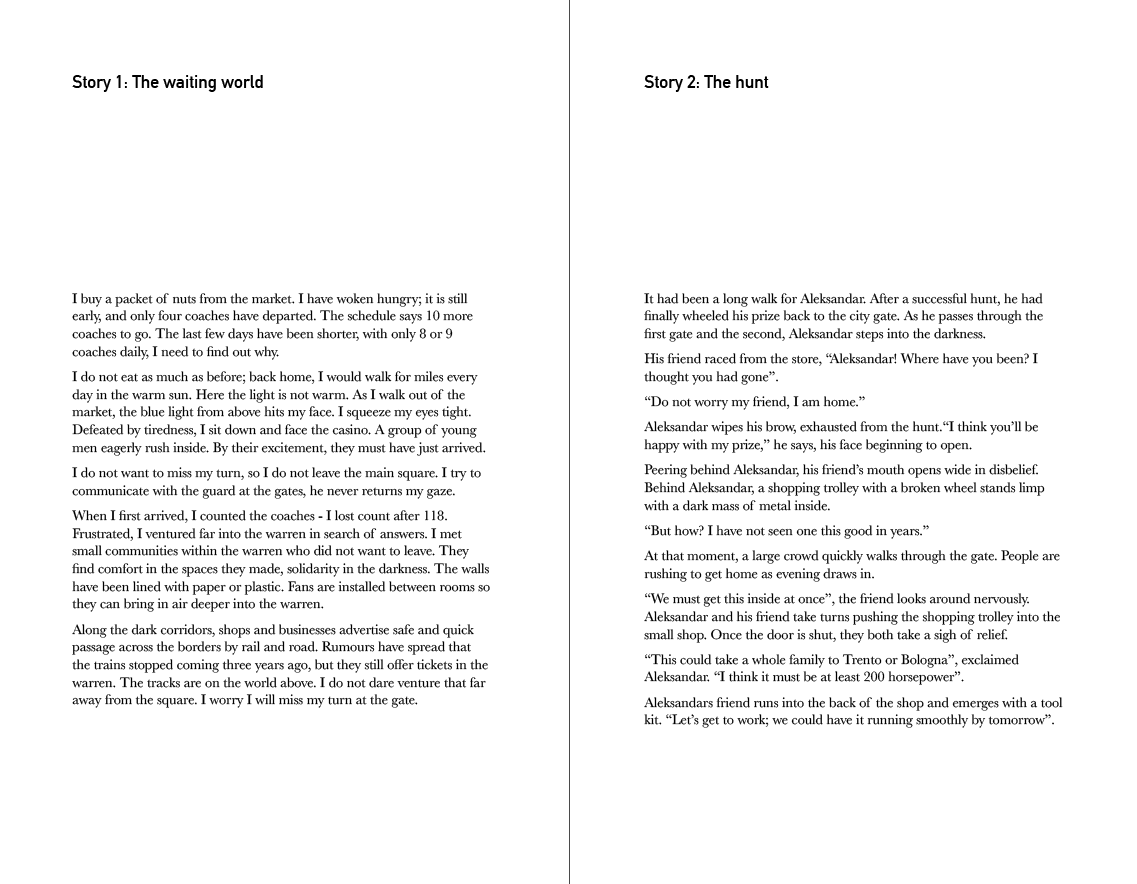STSM Contribution by Holly Dale
Methods of Analysis and Imagination Faculty of Architecture and the Built Environment Delft University of Technology

The project “Props and Appropriation: Exploring the Everyday Narratives in the City” afforded me the opportunity to travel to Skopje in October 2022. I had the chance to organise and conduct my own research alongside attending the workshop: Skopje Brutalist Trail. My aim was to explore how can literature help us to understand the past, present and future Brutalist Legacy in Skopje.
My research built upon the three themes in the ‘Skopje Brutalist Trail’ workshop: (1) brutalism, (2) solidarity/community building and (3) creative writing. The ‘Skopje Brutalist Trail’ workshop used theatrical characters to explore the contemporary meaningfulness of historic brutalist architecture. In my research, I paid particular attention to props. In theatre, props or theatre property are often everyday moveable objects used on stage, distinct from the characters, scenery and costumes. Props are especially important because they evoke everyday experiences that audiences can relate to. While props in theatres are used to support the dramatic narrative, props in a city can help to drive the urban narrative.
My research involved documenting and transcribing urban places with a focus on urban props. Urban props range from the personal to the communal and the corporate. They may include anything from an advertising board to a seller’s cart, chess board, or a book. Due to their temporary nature and appropriation, props can challenge the relationships between a place and the characters inhabiting it.
I focused on the sites of the City Gate and City Wall, two of Skopje’s most significant pieces of brutalist infrastructure. I spent three days walking, observing, and using writing to document the urban props I could see around the brutalist sites. My style of writing was heavily influenced by George Perec’s work, “An attempt to exhaust a place in Paris”. The style records the everyday objects that pass through a field of vision, highlighting urban and social rhythms of appropriation and use.
The technique of documenting the everyday use of a space through creative writing provided the characters and actions for the reader to appropriate, giving them principal control of the production of space.

The second part of the method involved transcribing. Transcribing is the act of writing another version; the literary group Oulipo explored experimental methods of transcription to find new potentialities in their work, a generator of unforeseen possibilities.
The research outcome was a series of fictional alternative narratives developed by transcribing my observations. The new narratives reflected my associations from the props documented in the text. In the new narratives, characters unseen in Skopje’s current brutalist legacy become the protagonists. The method afforded inclusive narratives in contrast to the top-down, selective brutalist legacy imposed on Skopje today.
To discuss my findings, I wrote an extended abstract exploring how literature can help us understand the past, present, and future Brutalist Legacy in Skopje relating to urban and architectural approaches to heritage. In the future, I plan to continue exploring the boundaries of literature and architecture and how they can help create inclusive shared futures.


